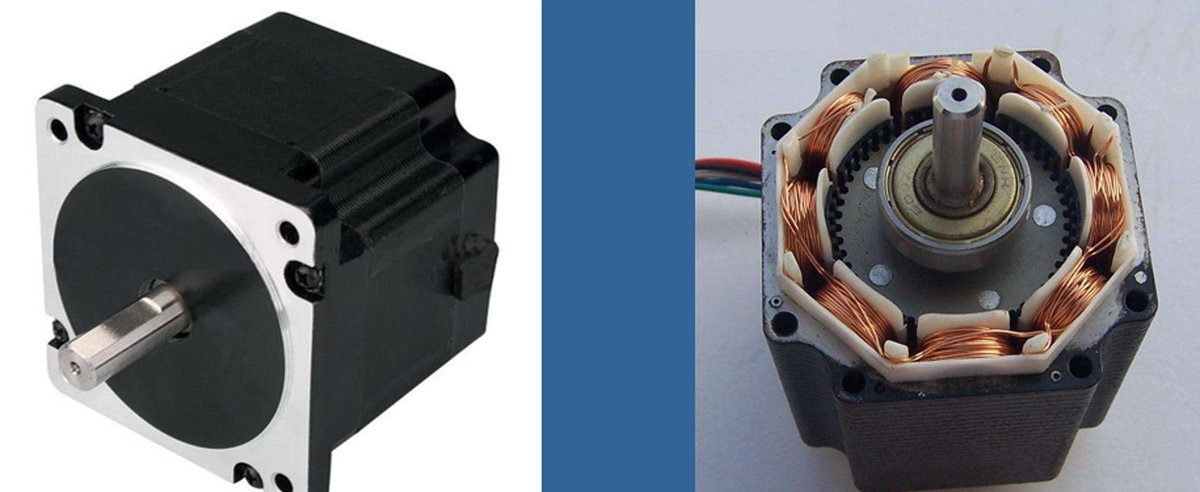Stepper motor driver selection analysis
2024-05-14 13:55:31
In industrial automation equipment, stepper motors are a common control device used for precise position control and speed control. When designing these systems, choosing the right stepper motor driver is crucial. Stepper motor drivers come in different types, each with their own applications and characteristics. This article introduces stepper motor drivers, including the cost, structure, and performance characteristics of different types of stepper motor drivers for your reference.
Classification of Stepper Motor Drivers

According to the different control methods and drive currents, stepper motor drivers can be divided into the following categories:
-
Voltage driver
Voltage driver is a basic driving method, which controls the speed and position of the stepper motor by changing the driving voltage. The characteristics of this driver are simple structure, low cost, but poor dynamic performance, prone to heating and losing steps.
-
Constant Current Driver
Constant current driver drives the stepper motor by controlling the current, ensuring that the current of the motor remains constant during operation. The characteristics of this driver are good dynamic performance, low heat generation, but relatively complex structure and higher cost.
-
Micro stepper driver
Microstep driver is a high-precision driving method that divides the basic step of a stepper motor to achieve more precise position control. It can provide higher accuracy and faster response time, making the control of stepper motor more flexible and suitable for high-precision position control and positioning control. It can also achieve high-speed, low-power motion control. This driver features high precision, low vibration, and low noise, making it suitable for applications with high precision requirements.
-
Closed-loop driver
Closed-loop drivers achieve real-time feedback on the position of stepper motors by adding encoders or other sensors. The driving system with feedback devices can achieve higher precision control. This type of driver features high precision, high dynamic performance, and low step-out rate, but it has a complex structure and higher cost.
Drive Selection
-
Voltage and current adaptation
Before selecting the driver, you need to determine the rated current of the stepper motor. The maximum current of the driver should not be lower than the rated current of the motor. Since the output current of the driver can be adjusted within a fixed range, if this floating range cannot meet the rated current of the motor, the motor will not output enough torque and may easily stall. Similarly, the output voltage of the driver must be within the working voltage range of the motor, and overvoltage should be avoided. Factors such as sudden braking and rapid acceleration need to be taken into consideration. If overvoltage occurs, the motor is likely to fail in an instant.
-
Subdivision requirements
Confirm the required subdivision requirements based on the working environment and working requirements of the motor, etc. Subdivision is a sign of control accuracy, and increasing the subdivision can improve accuracy. The higher the number of subdivisions, the smoother the motion of the motor, but it will also reduce the motor's torque. Therefore, comprehensive consideration should be taken when choosing. Stepper motors, especially reactive stepper motors, have the characteristic of low-frequency oscillation. If your motor needs to operate in the low-frequency resonance zone, a subdivision driver is a good choice. In addition, whether subdivided or not, the output torque is improved to varying degrees for various motors.
-
Torque adaptation
Torque is an important parameter of the motor, determining the torque required for the motor to carry the load, the selected driver's torque needs to meet the motor's use, otherwise the motor may not work properly, or even stop working directly.
-
Maximum Speed
Because it is the driver that controls the motor, the maximum speed of the driver cannot be lower than the maximum speed of the stepper motor, otherwise the motor's functionality will be limited when it operates.
-
Equal number of phases
The number of phases must be equal. For example, if the motor is two-phase, the step angle is 1.8°, and the driver must also be two-phase. If the motor is three-phase, the step angle is 1.2°, and the driver must also be three-phase.
See What Lunyee Can Do For You
Contact Us
- 8619149417743
- +86-0371-5562 0274
- [email protected]
- Zhengzhou, Henan Province, China
- Mon-Fri: 9:00 - 18:00




